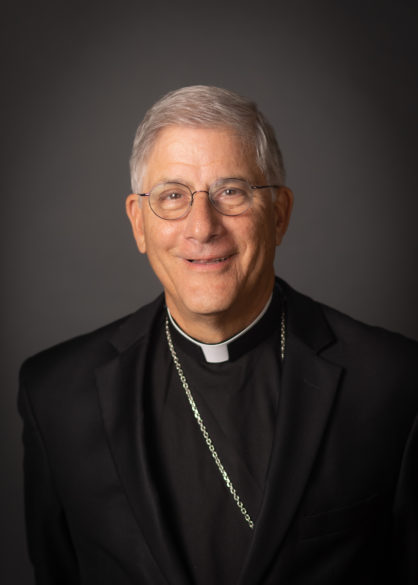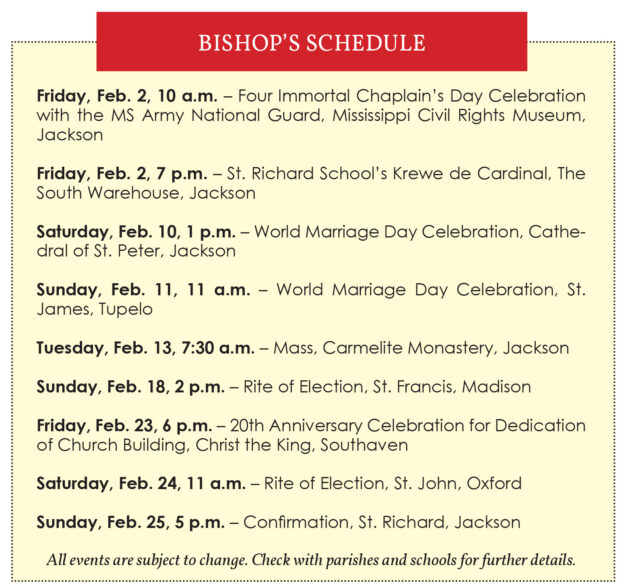By Bishop Joseph R. Kopacz, D.D.
Pope Francis commenced with the following words in his homily for Sunday of the Word of God on Jan. 21 of this year. “We have just heard that Jesus said to them: ‘Come, follow me’ … Immediately they left their nets and followed him.” (Mark 1:17-18)
The word of God has immense power, as we heard in the first reading: “The word of God came to Jonah, saying: ‘Get up, go to Nineveh … and preach to them’ … So Jonah set out and went … according to the word of the Lord. (John 3:1-3)
“The word of God unleashes the power of the Holy Spirit, a power that draws people to God, like those young fisherman who were struck by Jesus’ words, and sends others, like Jonah, towards those distant from the Lord. The word draws us to God and sends us to others. It draws us to God and sends us to others: that is how it works. It does not leave us self-absorbed, but expands hearts, changes courses, overturns habits, opens up new scenarios and discloses unthought-of horizons … The Word makes us hear the call of Jesus. It calls us to set out with him for the sake of others. The Word makes us missionaries, God’s messengers and witnesses to a world drowning in words, yet thirsting for the very Word it so often ignores.”

These hope-filled words of Pope Francis point to the sacred scriptures, “a lamp for our feet and a light for our path.” (Psalm 119:105) The words of Jesus, the Word made flesh – the way, the truth and the life (John 14:6) – are the most important words recorded in the Bible, and truly ever spoken in the history of the human race, words that “will never pass away.” (Matthew 24:35)
From the heart of God’s word the church celebrates a diverse legacy during the month of January. At the midpoint each year is the celebration of Martin Luther King Jr’s birthday, a time to renew our hunger for the coming of God’s Kingdom, a kingdom of justice, peace and joy in the Holy Spirit. (Romans 14:17)
On Jan. 22 each year the church broadens the vision of God’s Kingdom with her unwavering commitment to life, justice and peace, and the dignity of the human being made in the image and likeness of God from the moment of conception. “Before I formed you in the womb I knew you, before you were born I dedicated you. (Jeremiah 1:5) “You formed my inmost being; you knit me in my mother’s womb. I praise you because I am wonderfully made; wonderful are your works.” (Psalm 139:13-14)
The Word of God furthers the work of Christian unity for which the Lord so ardently prayed at the Last Supper anticipating the division that plagues the human race. “I pray not only for them, but also for those who will believe in me through their word, so that they may all be one, as you Father, are in me and I in you, that they also may be one in us, that the world may believe that you sent me.” (John 17:20-21)
The theme for this year’s week of prayer for Christian Unity is: “You shall love the Lord, your God, and your neighbor as yourself.” (Luke 10:27)

Lastly, our commitment to Catholic School education rests upon the Word of the Lord as he departed this world in his glorified body. “Therefore go and make disciples of all nations, baptizing them in the name of the Father and of the Son and of the Holy Spirit, and teaching them to obey everything I have commanded you. And surely I am with you always, to the very end of the age.” (Matthew 28:19-20) From time immemorial education has been the centerpiece of the life of faith in the Jewish-Christian tradition.
“God made a decree to Jacob, established a law in Israel: which he commanded our ancestors, they were to teach their children; that the next generation might come to know, children yet to be born. In turn they were to recount them to their children, that they too might put their confidence in God, and not forget God’s deeds, but keep his commandments.” (Psalm 78:5-7)
May the Lord Jesus continue to bless all who labor in our diocesan catholic school system. Our schools and all of our life-long faith formation follow the way of the Lord himself who after being found teaching in the temple at 12 years of age, “went down with them and came to Nazareth, and was obedient to them, and his mother kept all these things in her heart. And Jesus advanced in wisdom, knowledge and favor before God and others.” (Luke 2:52)
May the treasure of God’s Word continue to be a lamp for our feet and a light for our path.












